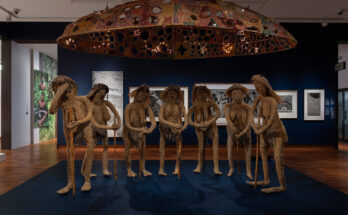Today, 572 Years Ago, the Eternal Empire Fell
For more than two thousand years, the Roman Empire had stood—its form shifting from Republic to Principate, from Diocletian’s Tetrarchy to Byzantium, the Greek-speaking eastern half that endured long after the Latin West fell. But on May 29, 1453, at the gates of Constantinople, that long imperial line—stretching from Augustus to Constantine XI—was finally and violently severed.
Today, 572 years ago, the sun rose for the last time over a Roman Empire. That morning, the Ottoman Janissaries poured over the legendary Theodosian Walls. The Genoese commander Giovanni Giustiniani, wounded and demoralized, abandoned his post. And in the city’s final, hopeless hours, Emperor Constantine XI Palaiologos—last of the Roman emperors—cast off his imperial regalia, drew his sword, and died alongside his men in the streets he had sworn to protect. With his death, the final ember of the Roman world was extinguished.
I. The Last Bastion of Rome
By the fifteenth century, the once-mighty Byzantine Empire had been reduced to little more than the city of Constantinople and a few scattered territories. The Latin sack of the city in 1204 during the Fourth Crusade had crippled it, and although the Byzantines retook their capital in 1261, they never fully recovered.
Still, Constantinople remained a symbol—a monument to Roman endurance. Its triple-layered Theodosian Walls, nearly a thousand years old, were considered impregnable. The city’s domes and minarets stood in defiance of time and invasion, a Christian island in an increasingly Islamic sea. It was, in its very existence, an affront to the ambitions of rising powers—none more so than the burgeoning Ottoman Empire.
II. The Rise of the Ottoman Threat
By the early 1400s, the Ottomans had become the dominant force in Anatolia and the Balkans. Sultan Mehmed II, who ascended the throne in 1451 at just nineteen, was determined to complete what centuries of Muslim rulers had failed to do: conquer Constantinople.
He prepared for war with the precision of a master tactician and the vision of an empire-builder. His engineers cast massive cannons—most famously the Basilica, forged by the Hungarian master Orban—which hurled 600-pound stone balls capable of battering the ancient walls. He rebuilt the fortress of Rumeli Hisarı on the Bosporus to choke off aid to Constantinople by sea. And he amassed a force of over 80,000 men, including elite Janissaries—Ottoman slave soldiers trained from childhood to be fearless, disciplined killers.
Against this formidable enemy stood Emperor Constantine XI Palaiologos and roughly 7,000 defenders. These included Byzantine soldiers, a small contingent of Italian mercenaries and Genoese volunteers, and a few remaining allies from the Orthodox world. Among them was Giovanni Giustiniani Longo, a seasoned commander from Genoa, who arrived with 700 well-equipped men. His presence brought hope—and expectation.

III. The Siege Begins
The siege of Constantinople began on April 6, 1453. For over seven weeks, the Ottomans bombarded the city day and night. The Theodosian Walls, though massive, began to crumble under the repeated battering of Mehmed’s great cannons. Every breach was met with a frantic repair by defenders and citizens alike, working under cover of night.
Meanwhile, the Golden Horn—Constantinople’s northern harbor—remained protected by a great chain. The Byzantines believed it secure. But in a stunning maneuver, Mehmed ordered his ships dragged overland on greased logs to bypass the barrier, placing Ottoman vessels directly into the Horn. The defenders awoke one morning to find the enemy’s ships behind their lines.
Still, the Byzantines held on. Night after night, Constantine rode the walls, encouraging his exhausted men. Giustiniani’s leadership in the outer defenses proved crucial—his troops holding firm against wave after wave of attacks.
Yet as the weeks passed, morale began to fade. Food grew scarce. Reinforcements never arrived. Appeals to the West—especially to Rome and Venice—yielded only silence or symbolic gestures. The East had been abandoned.
IV. The Night Before the End
By late May, the end was near. Mehmed’s artillery had blasted gaping holes in the land walls. He had regrouped his army and prepared for one final, devastating assault. On the evening of May 28, the city held its last mass at Hagia Sophia. Christians—Greeks, Latins, and others—gathered together in the vast, echoing church. For the first time in centuries, the schism between Orthodox and Catholic was forgotten in the face of doom.
Emperor Constantine, dressed not in armor but in humble robes, received the sacrament. Those present described the service as quiet, mournful, and surreal—as if time itself held its breath. Outside, Ottoman soldiers prayed under crescent moons, their scimitars sharpened and banners raised.
V. The Final Assault – May 29, 1453
At dawn on May 29, the silence shattered. Trumpets, drums, and war cries erupted across the plain. The final assault began in waves. Irregular troops surged first, intended to tire the defenders. Then came Anatolian forces. Finally, the elite Janissaries stormed the breaches with deadly precision.
Giustiniani was gravely wounded in the early morning melee—struck either by cannon fire or a crossbow bolt. His injury, and subsequent removal from the battlefield, caused panic among his men. Many fled their posts. The defenders, already stretched thin, crumbled. The walls were overwhelmed.
In the chaos, Constantine XI removed his imperial regalia. “The city is lost,” he is said to have declared. “But I live.” With sword in hand, he plunged into the fight—disappearing into the bloodied streets, never to be seen again. His body was never definitively identified, though legends claimed it was found near the Gate of Saint Romanus, surrounded by fallen comrades.
The Ottomans poured through the city. Churches were looted, bells silenced, and homes set ablaze. Hagia Sophia, where the last mass had ended only hours before, was turned into a mosque by midday. Women and children were taken captive. The air reeked of smoke, blood, and sorrow.
VI. The End of an Empire
When the sun set on May 29, 1453, the Roman Empire—founded in 27 BCE by Augustus—was no more. It had survived for over 1,400 years in Constantinople after the fall of the Western Roman Empire. And now, it was gone.
The fall of Constantinople was not just a military conquest. It was the symbolic and spiritual death of the old world. For centuries, Europeans had looked to Byzantium as a beacon of Christian endurance and classical heritage. Its loss sent shockwaves through Europe. For many, it marked the beginning of a new era—an age in which Islam dominated the Eastern Mediterranean and the idea of Rome as eternal was finally laid to rest.
VII. A Legacy Etched in Stone and Memory
Though the city fell, its memory endured. The Ottoman conquest transformed Constantinople into Istanbul, capital of a new empire. Mehmed II, who styled himself “Caesar of Rome,” sought to blend the legacy of Byzantium with his own imperial ambitions. Greek scholars fled west, carrying with them ancient manuscripts and knowledge that helped spark the European Renaissance.
Emperor Constantine XI was canonized in folk tradition, remembered not as a failed ruler but as a martyr-king. Songs, poems, and paintings throughout the Orthodox world mourned the “Marble Emperor,” who would, legend said, return to reclaim his city when the stars aligned.
The Genoese, though often vilified for Giustiniani’s flight, played their part—brave and bold in a doomed cause. And the Theodosian Walls, though breached, remained a testament to Roman engineering and defiance.


